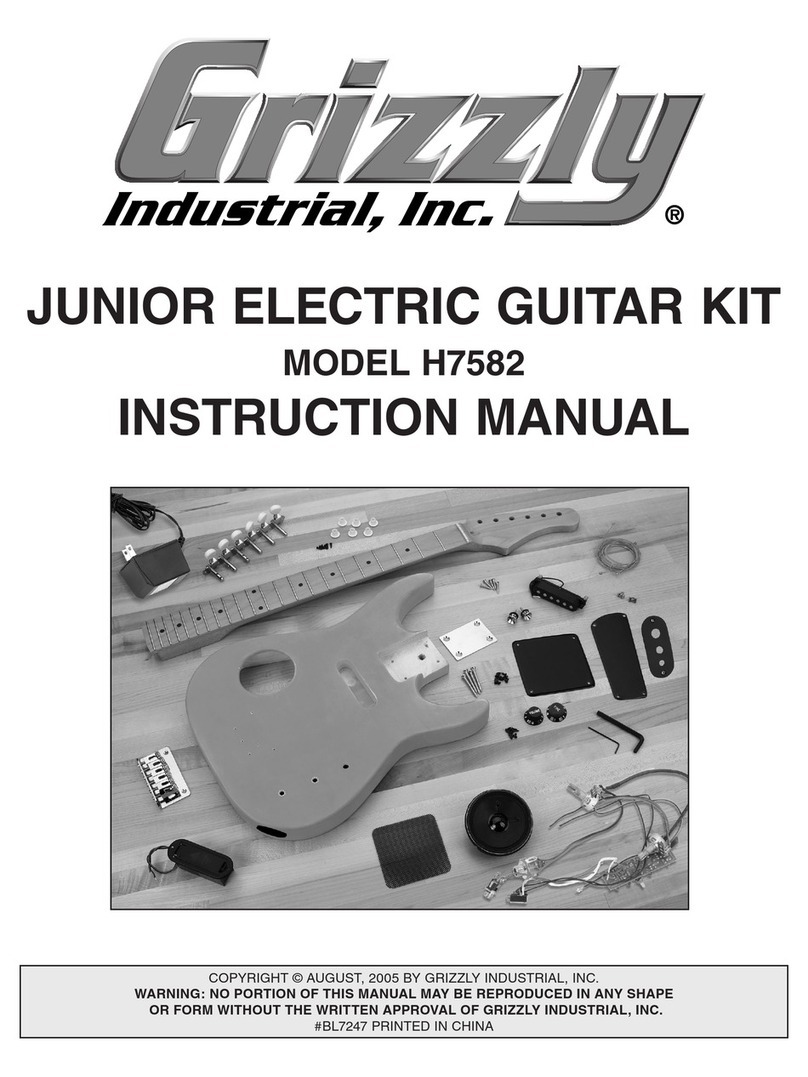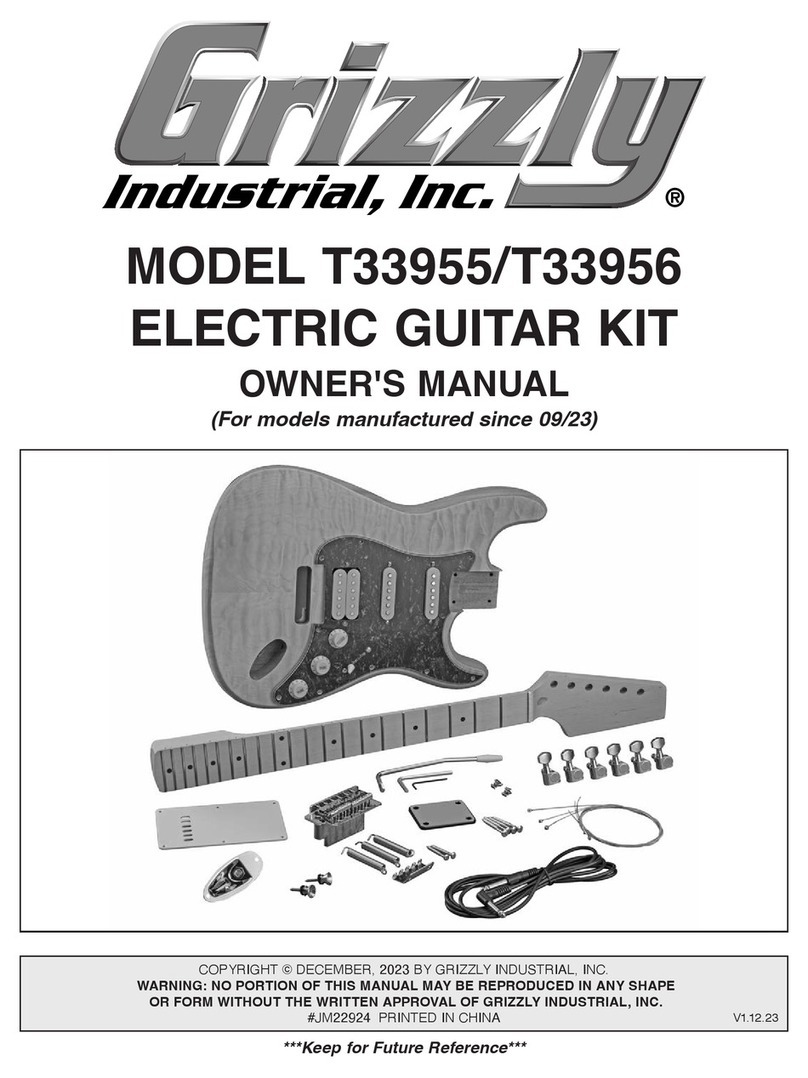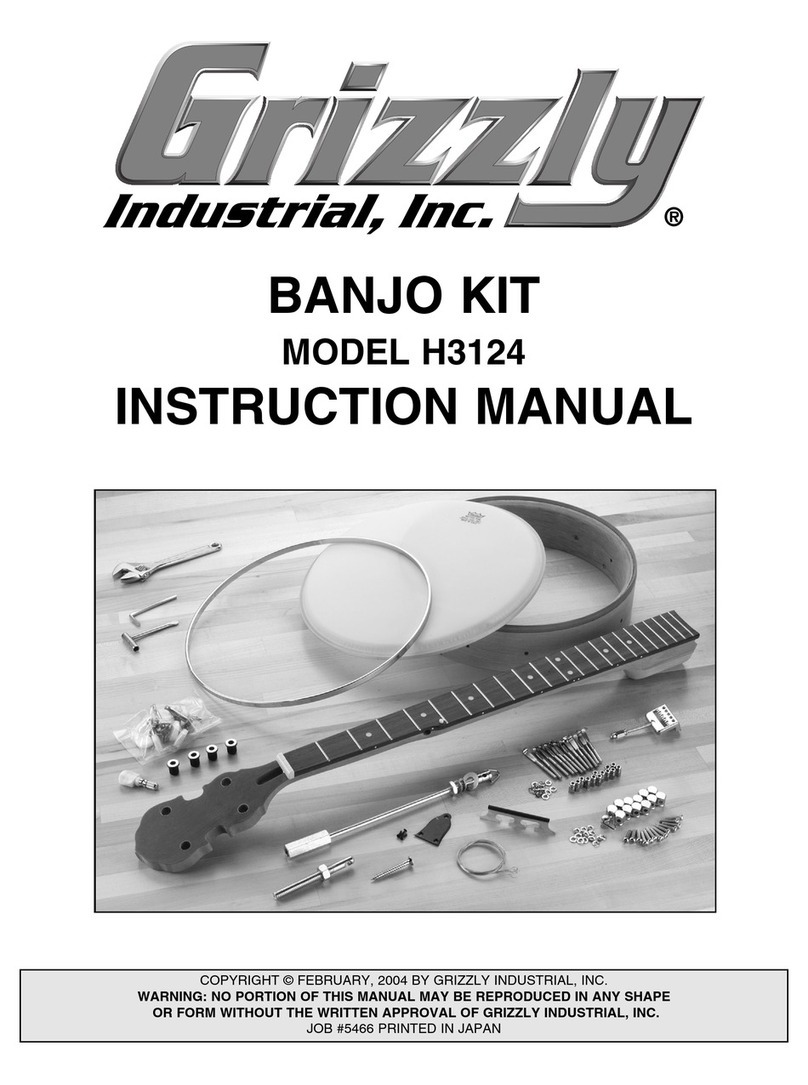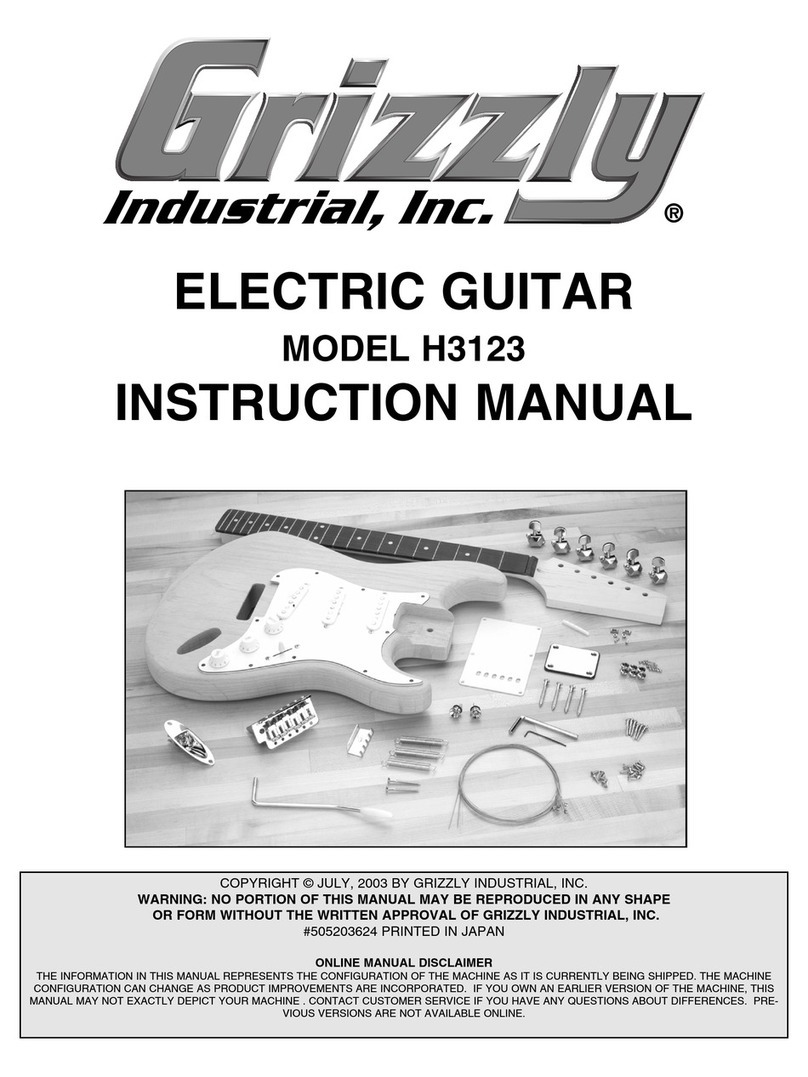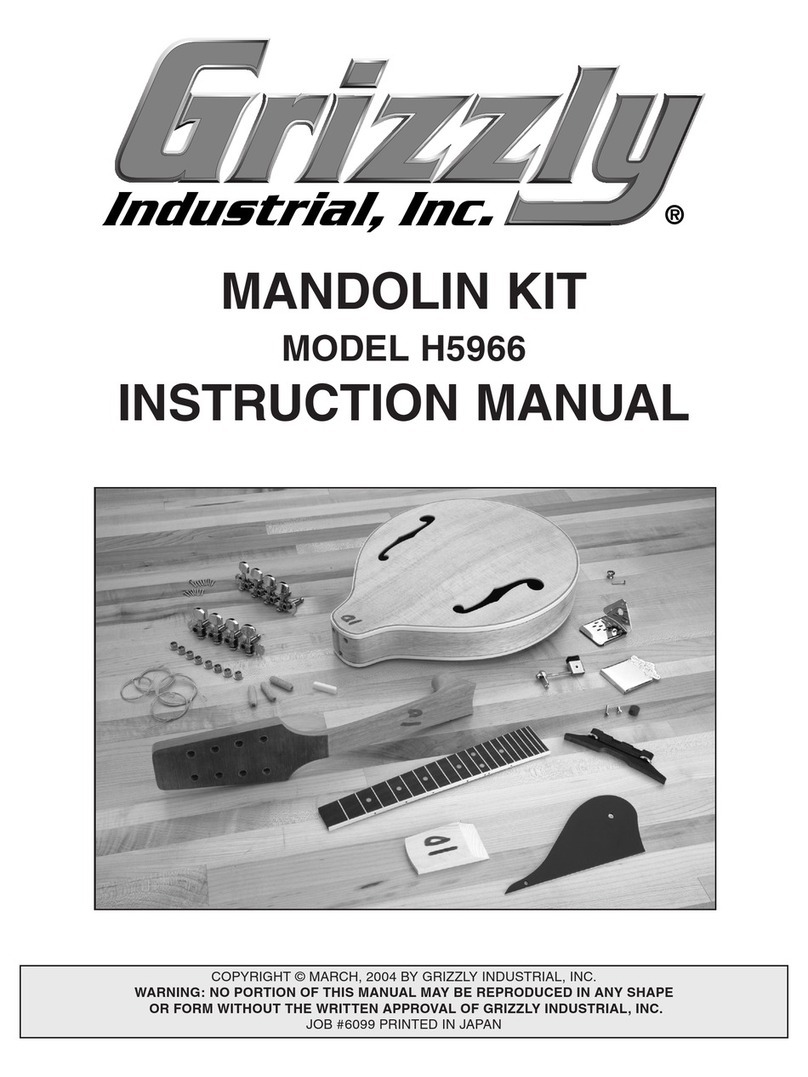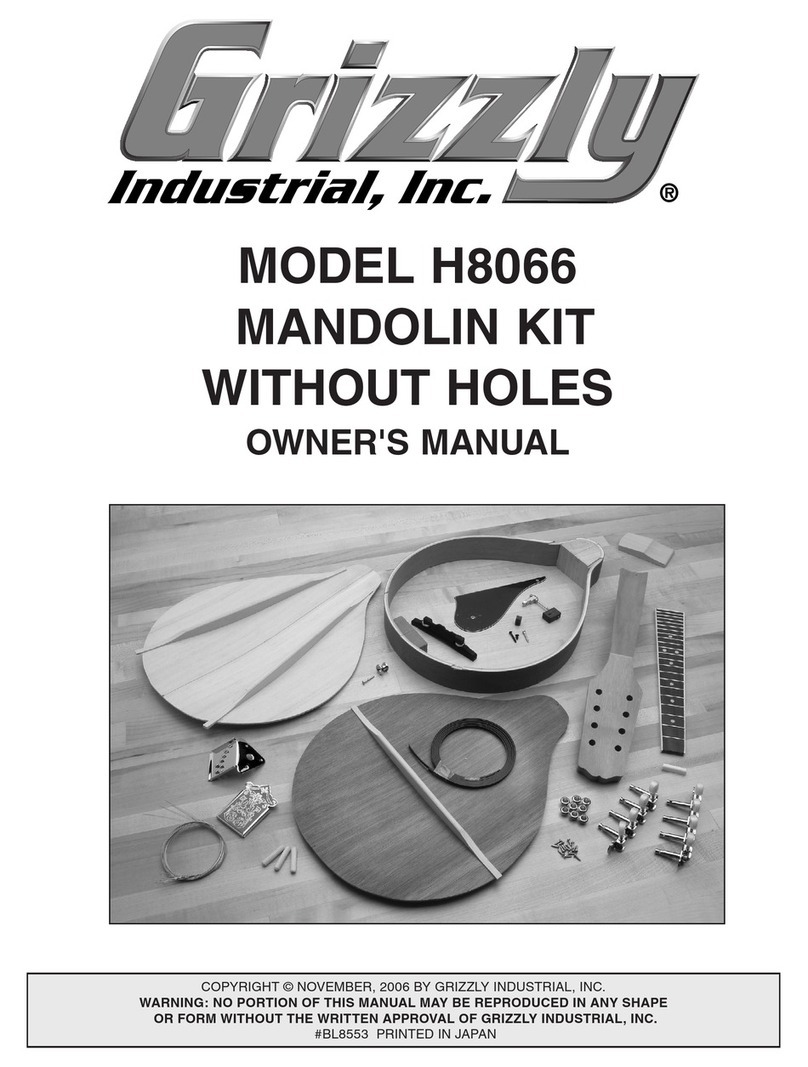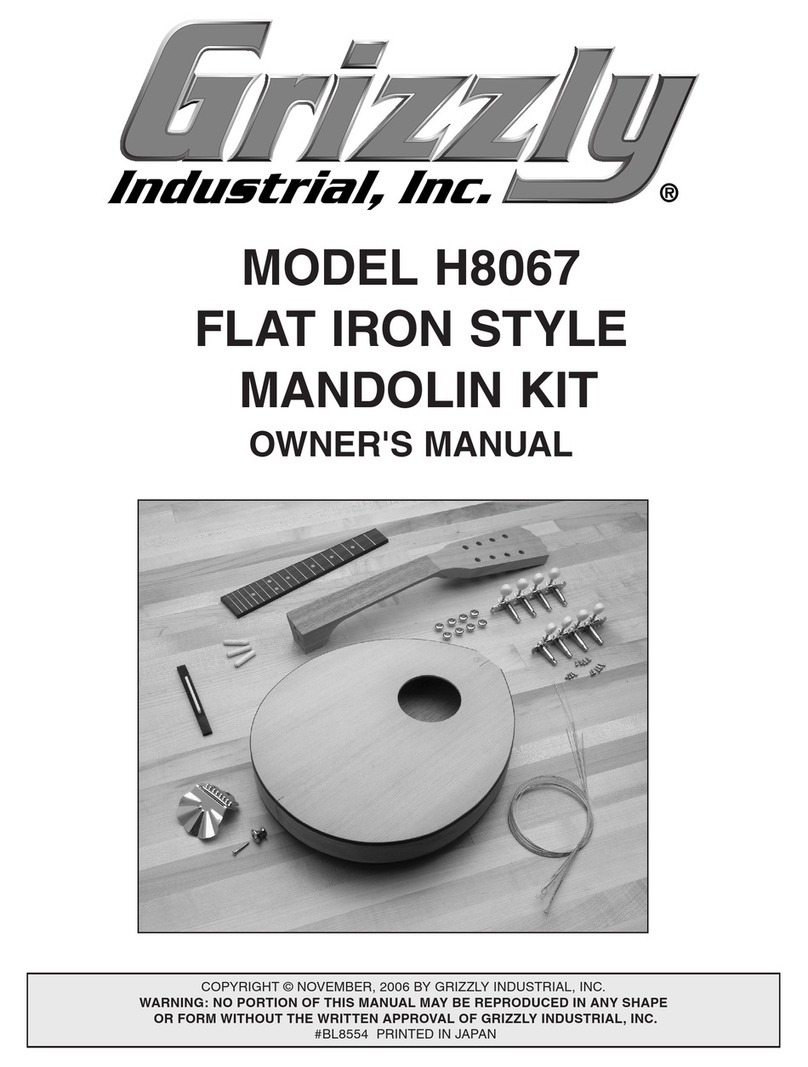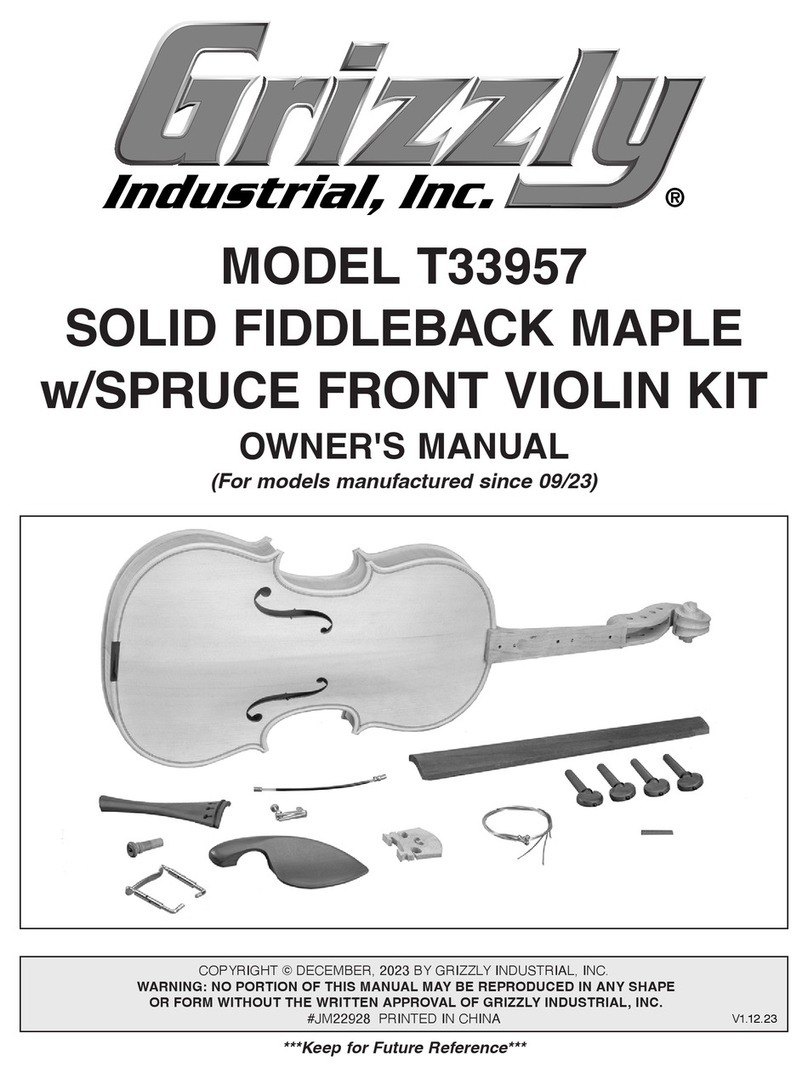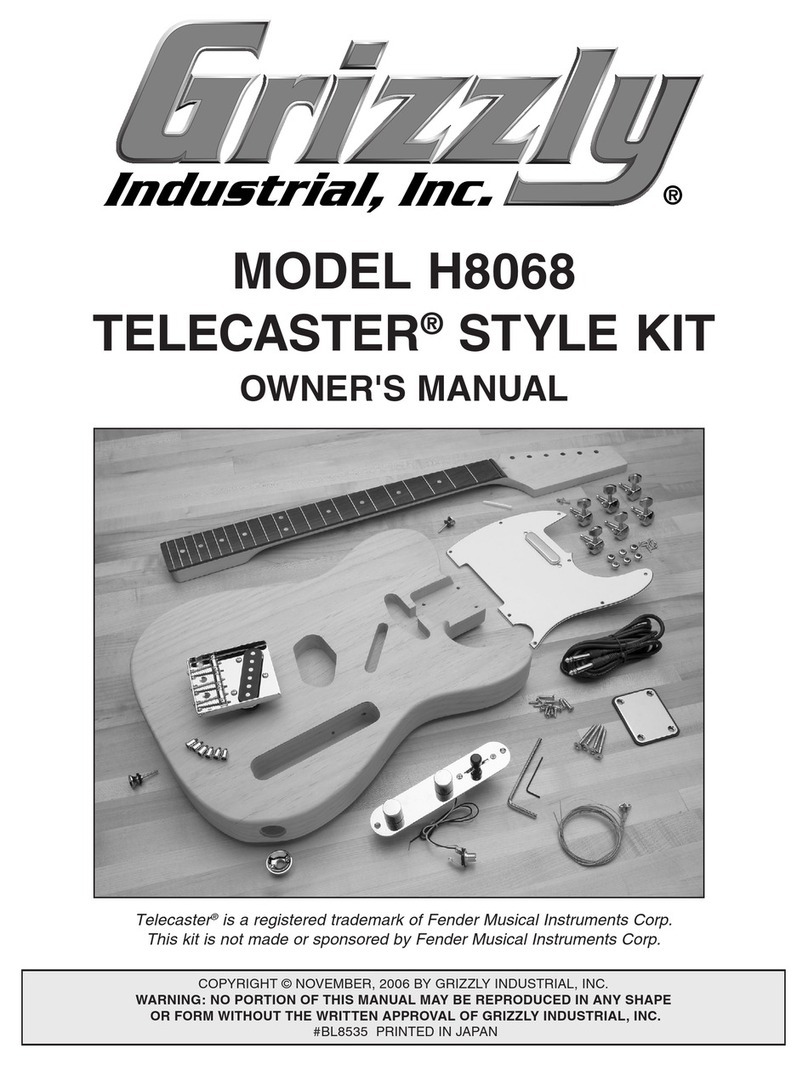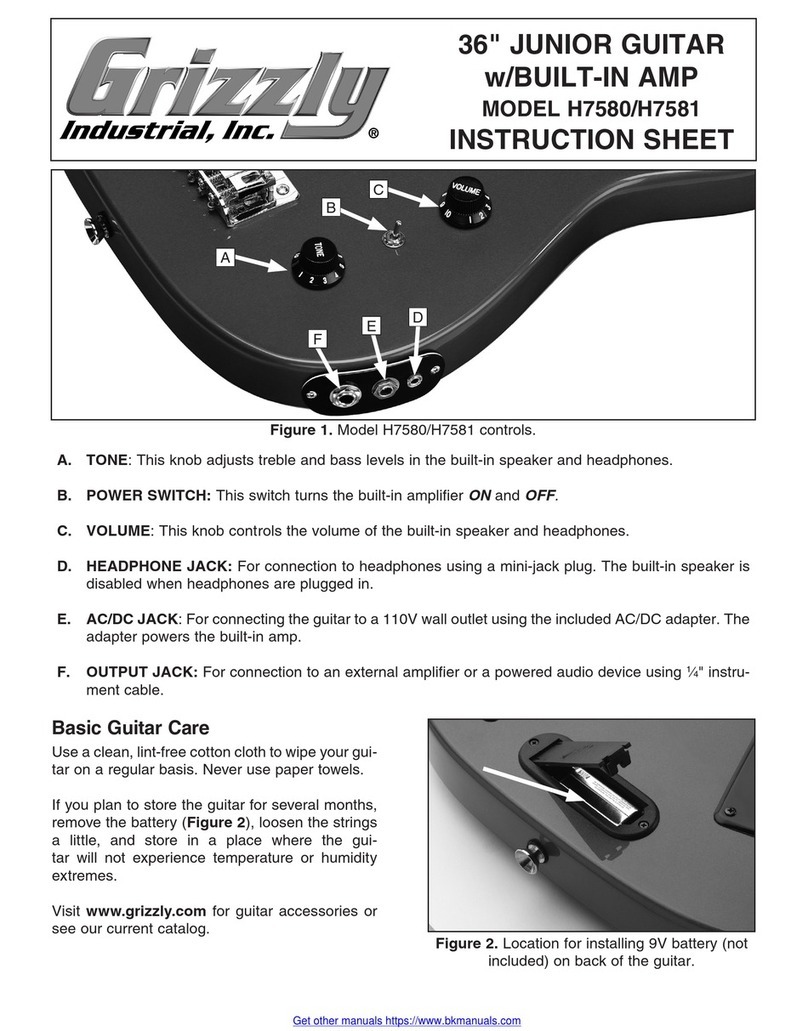
-6- Model T33952/53/54 (Mfd. Since 09/23)
SECTION 2: SETUP
Needed for SetupUnpacking
This instrument was carefully packaged for safe
transport. When unpacking, separate all enclosed
items from packaging materials and inspect them
for shipping damage. If items are damaged,
please call us immediately at (570) 546-9663.
IMPORTANT: Save all packaging materials until
your are completely satisfied with the instrument
and have resolved any issues between Grizzly or
the shipping agent. You must have the original
packaging to file a freight claim. It is also extreme-
ly helpful if you need to return your instrument.
The majority of the wooden components in this kit
are fully machined from the factory and are ready
for assembly. A small amount of sanding and fin-
ishing is required to complete your guitar.
Description Qty
• Safety Glasses (per person)....................... 1
• NIOSH-Approved Respirator (per person)... 1
• Ratchet or Frame Clamp ............................ 1
• Hobby Knife or Chisel ................................ 1
• T-Handle Reamer (1⁄8" to 5⁄8") ..................... 1
• Drill Press or Cordless Drill w/Depth Stop... 1
• Forstner Bit 5⁄32".......................................... 1
• Sanding Block ............................................ 1
• Band Clamp................................................ 1
• Fine Tooth Saw (Coping, Fret, or Curved)..... 1
• Bridge Clamp (4" Minimum) ....................... 1
• Mini-Clamps (1" Minimum) ......... As Needed
• Straightedge (18" Minimum) ....................... 1
• Small File (Fine) ......................................... 1
• Rubber Bands ............................ As Needed
• 2" x 2" x 18" Wood Stock ........................... 1
• Thread or Thin String ................ As Needed
• Pencil.......................................................... 1
• Phillips Head Screwdriver #0 ....................... 1
• Wire Cutters ............................................... 1
• Precision Ruler ........................................... 1
• Disposable Nitrile Gloves ........... As Needed
• Wood Glue ................................. As Needed
• Super Glue ................................. As Needed
• Finishing Supplies ...................... As Needed
• Wood Filler/Putty ........................ As Needed
• Tack Cloth................................... As Needed
• Lint-Free Rags............................ As Needed
• Sandpaper #180, #240, #320 .... As Needed
• Sandpaper Wet/Dry #800, #1000,
#1200.......................................... As Needed
• Masking or Painter's Tape.......... As Needed
• C-Clamps (3" Minimum) ............. As Needed
• Masking paper............................ As Needed
• Tuning Fork (Optional)................................ 1
• Palm Sander (Optional).............................. 1
• Binding Tape (Optional).............. As Needed
Wear safety glasses during
the entire setup process!
Planning &
Preparation
Total time building this instrument will vary on
many factors. Variables such as glue manufactur-
ers instructions and curing time, temperature and
humidity at the time of building, and your schedule
are just a few of the factors that can affect the
length of time spent on this project.
Perhaps the biggest determinant of time spent
completing this instrument is the type of finish
and the finishing process used. Finishing this
instrument can be as simple as applying a single
coat of stain or lacquer that can be done rela-
tively quickly, up to a multi-coated finish that takes
weeks to harden.
Careful planning and budgeting ample time will
make this project easier and ensure you end up
pleased with your results. Good luck building your
instrument, and Grizzly hopes it turns out looking,
and sounding great.
